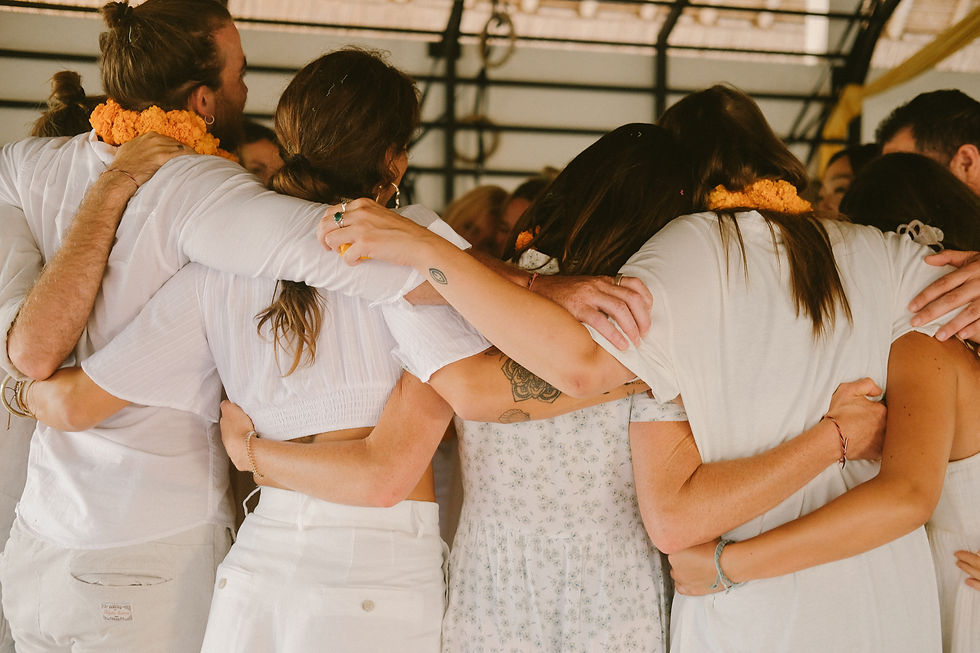Why we all need some Yin Yoga
- buergiceline
- Oct 15, 2020
- 4 min read
Updated: Feb 10, 2022
If you know me you know that I am a very active Person. Or better lets say I was a very active, Yang Person. I used to jump around, couldn't really sit still, exercised every day in the Gym, went running, hiking, skiing and dancing. I was living life the fast lane. I still love to be a active Person but I do know now that I also need to have quite moments and do the exact opposite. So when I first started practicing Yin years ago, I found it incredible difficult to just "be" but I knew straight away that this was exactly the missing piece in my life.
Yin yoga’s tranquil pace helped me to ground myself in the present moment and to connect deeply with my mind, body, and soul.

But what is Yin Yoga?
Yin yoga is a restorative practice with slow, passive movements that target the deep connective tissues in our body. There are no standing tree poses, no Warriors and and no sun salutations.
In Yin yoga, the pace is slow and you don’t need to break a sweat in order to reap the benefits.
Like many other practices, the asanas (postures) are mostly performed in a seated or lying down position. You can expect the likes of a wide-kneed child’s pose, a gentle backbend, and forward bends with your legs together.
While the practice of holding yoga asanas for extended periods of time has always been a part of traditional yoga practice, it is the length of time each pose is held that makes Yin yoga different. For Beginners it can be very challenging to hold the pose for a minute or two, whereas the more experienced usually held for three to five minutes. It’s not uncommon to see advanced practitioners stay in a single pose for up to 20 minutes.
Animalistic Asanas
Everything about Yin yoga ties it back to the Taoist concept of yin and yang – the opposite and complementary principles of nature. Yin can be described as slow, steady, feminine, passive, and cool. Yang, on the other hand, is known to be changing, fluid, masculine, active, and hot.
Despite a deep-rooted history in the East, Yin yoga was actually founded by a practitioner from the West. Influenced by Taoist alchemy, and the practice of Hatha and Taoist yoga, Paulie Zink developed Yin and Yang yoga which incorporates long-held postures (Yin) and faster-paced movements that tie the postures together (Yang). His original concepts were thrown slightly off balance in the 1980s when Paul Grilley and Sarah Powers came onto the scene, encouraging practitioners to focus only on the slow, restorative aspect of the original discipline in pursuit of cultivating inner stillness. Ultimately, Yang was dropped and Yin yoga, as we know it today, was born.
Yoga for the Mind
In our fast-paced, over-stimulated world filled with deadlines, commitments, and incessant electronic notifications, Yin yoga allows us to press the pause button on life.
The practice is often considered an effective method of stress relief, as the slow pace of movement is an excellent primer for meditation. Through a long, deliberate focus on the physical self, you begin to naturally bring stillness to your thoughts, creating the perfect conditions to clear the mind.
At first, the practice may be a little uncomfortable or create feelings of agitation. But over time, learning to surrender to the postures teaches you to surrender your mind.
Yoga for the Body
From a physical perspective, Yin yoga brings about all of the benefits of other conventional yoga practices, as well as some additional positive benefits for the body.
Increased muscle strength and tone, energy, vitality, and metabolism, together with improved cardio and circulatory health, respiration, and overall athletic performance are just a few of the myriad physical benefits. The focus on the deep connective tissues, as opposed to only muscle activation, means that Yin yoga boosts circulation around the joints and drastically improves flexibility.
Further, Yin yoga is specifically designed to help you sit longer and more comfortably, making it an excellent precursor to developing helpful meditation practices.
Yoga for the Soul
Finally, with roots in spirituality, Yin yoga is like food for the soul, providing emotionally therapeutic release.
The poses are said to stimulate the meridian points and relieve blockages in the subtle body–the part of the mind, intellect, and ego that control the physical body. Releasing these blockages helps us achieve a state of spiritual equilibrium. On an emotional level, it allows for thoughts and feelings to arise that would otherwise go unnoticed in a faster-paced practice.
This practice is an intimate experience that allows time to cultivate awareness of silence, to truly be present and connect with our inner self.
Do you want to learn more about Yin Yoga? Do you want to become a Yin Yoga Teacher with profound knowledge? Do you love practicing yin and want to deepen your practice?
Then maybe you want to join the Yin Yoga Tribe and start your online Yin Teacher Training with me.
The Course is build up in 2 Modules (2x 50hrs) You can choose to do only one Module or both Modules in a Package.
Read more about the Yin teacher training here. Both Modules are of course Yoga Alliance accredited. Drop me a message if you have any Questions about Yin or the Yin Teacher Training.
Love and Light,
Celine




Comments